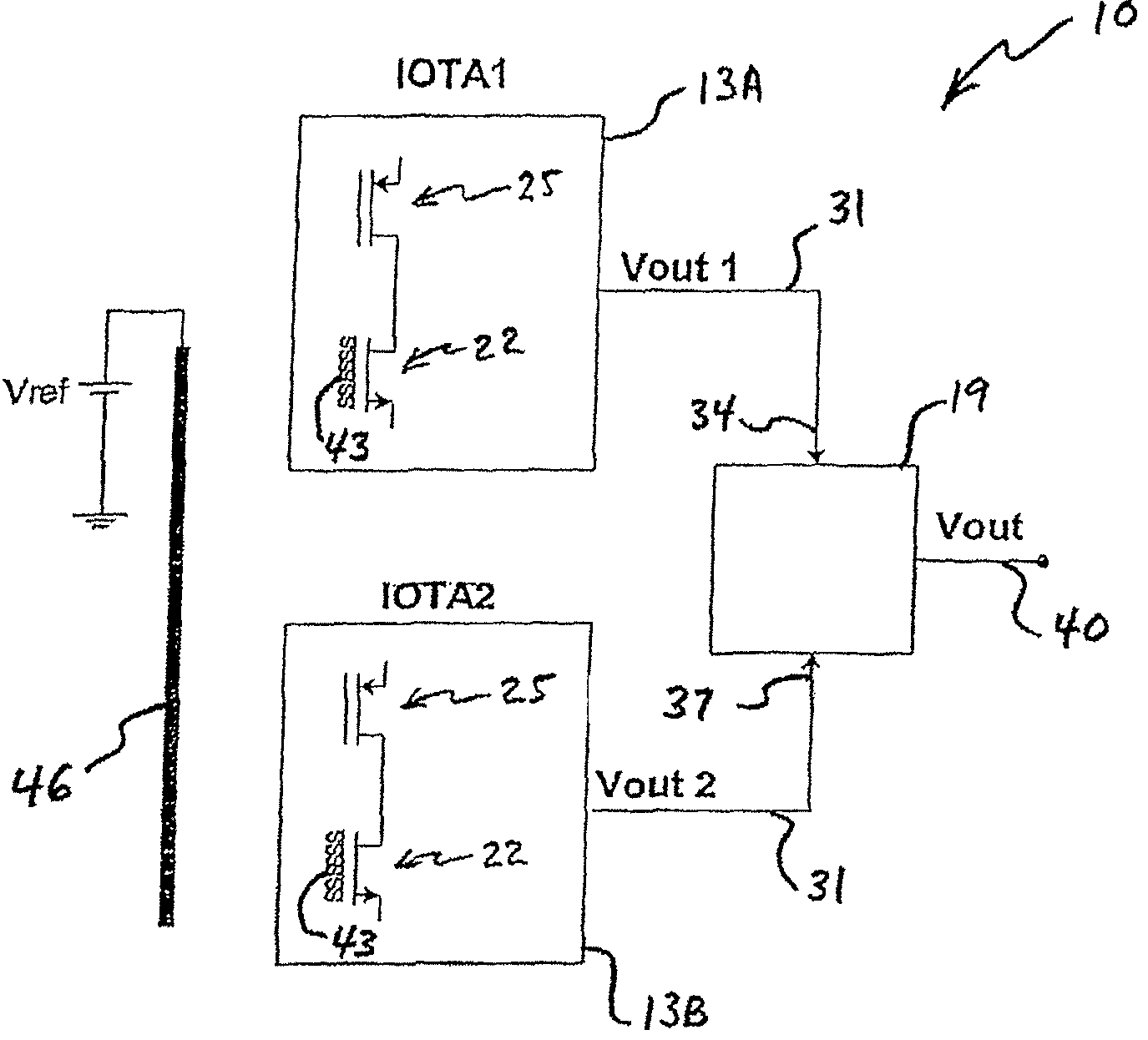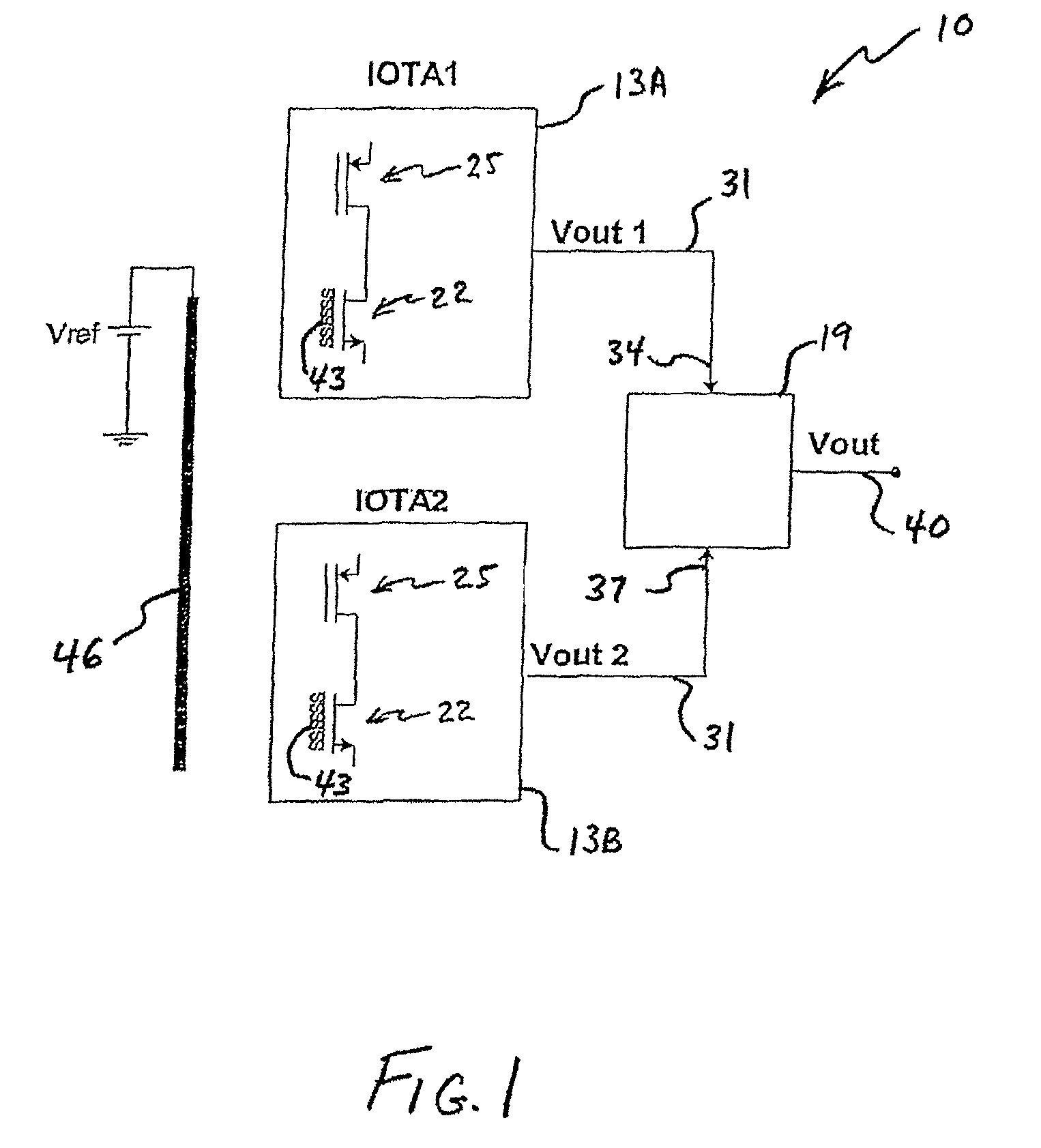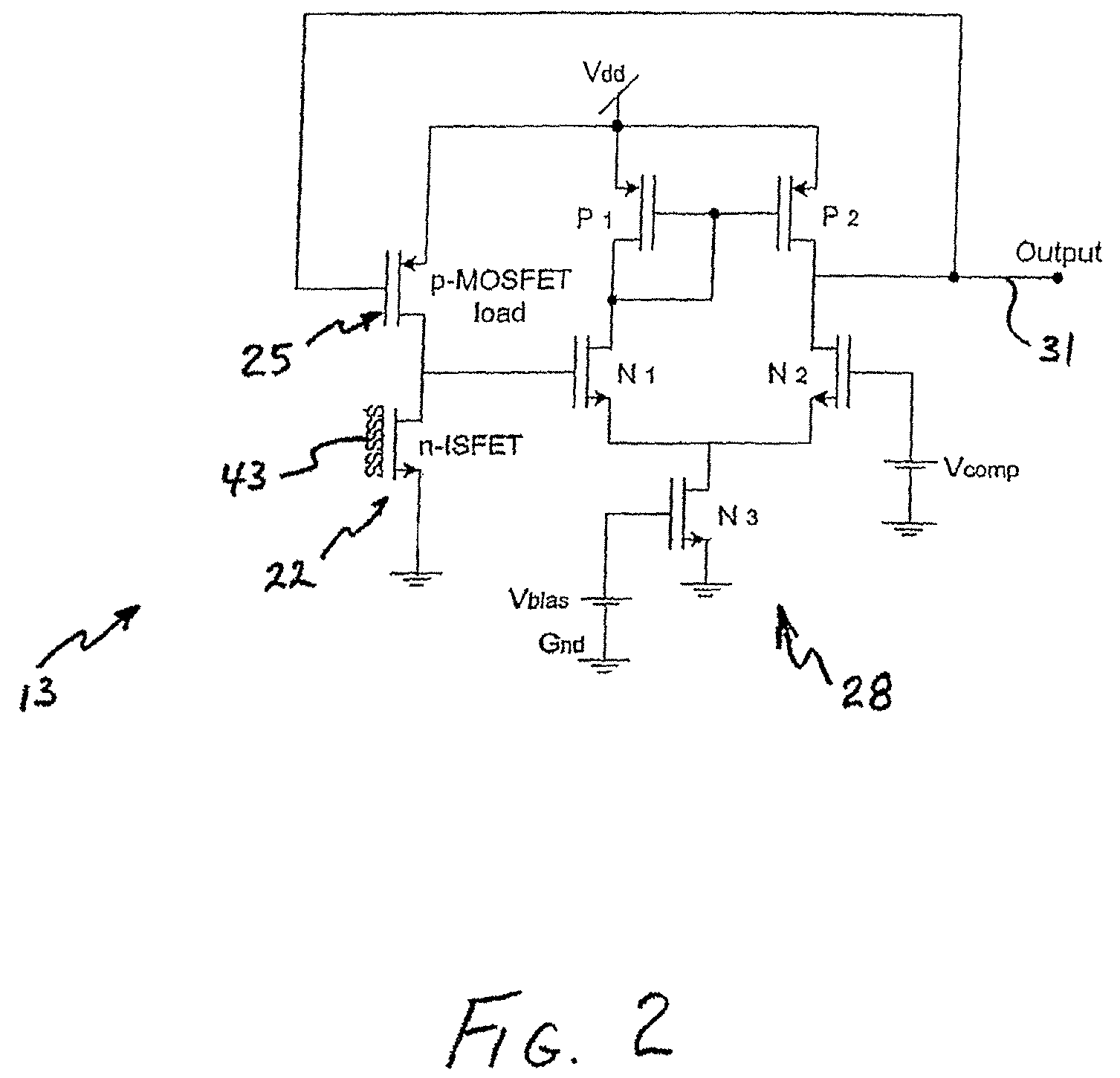pH-change sensor and method
a sensor and ph technology, applied in the field of ph-change sensor and method, can solve the problems of limiting the commercialization of technology, limiting the diversification of sensors based on the same sensor platform, and requiring relatively less power to opera
- Summary
- Abstract
- Description
- Claims
- Application Information
AI Technical Summary
Benefits of technology
Problems solved by technology
Method used
Image
Examples
Embodiment Construction
[0024]The invention may be embodied as a sensor 10 which can detect a change in pH. Such a pH-change sensor 10 may have a first ion-sensitive-transistor-operational-transconductance-amplifier (the “first IOTA”) 13A, a second ion-sensitive-transistor-operational-transconductance-amplifier (the “second IOTA”) 13B and a differential sensor 19. FIG. 1 depicts such a pH-change sensor 10.
[0025]FIG. 2 depicts an IOTA 13 according to the invention. In FIG. 2 there is shown an IOTA 13, which may have an ion-sensitive transistor (an “IST”) 22, which is electrically connected to a load transistor (the “load transistor”) 25. The IST 22 in FIG. 2 is an n-channel ion-sensitive field-effect transistor (“n-ISFET”). The IST 22 and the load transistor 25 may each be a field-effect transistor. The load transistor 25 may be a metal-oxide semiconductor field-effect transistor. The IST 22 may have a drain region, a source region and a channel region that electrically connects the drain and source regions...
PUM
| Property | Measurement | Unit |
|---|---|---|
| power | aaaaa | aaaaa |
| thickness | aaaaa | aaaaa |
| thickness | aaaaa | aaaaa |
Abstract
Description
Claims
Application Information
 Login to View More
Login to View More - R&D
- Intellectual Property
- Life Sciences
- Materials
- Tech Scout
- Unparalleled Data Quality
- Higher Quality Content
- 60% Fewer Hallucinations
Browse by: Latest US Patents, China's latest patents, Technical Efficacy Thesaurus, Application Domain, Technology Topic, Popular Technical Reports.
© 2025 PatSnap. All rights reserved.Legal|Privacy policy|Modern Slavery Act Transparency Statement|Sitemap|About US| Contact US: help@patsnap.com



